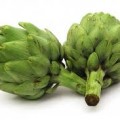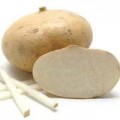[Intro text]
Botanical Information
Taxonomy
Syringa vulgaris
History
Physical Description
Shrub that grows to 15′ high; colorful, fragrant display of flowers in early spring
Varieties & Cultivars
Categories or Types of [plantname]
Colors Available
Varieties (link to ../category/cultivars/tag/[plantname])
Growth Requirements
Climate & Temperature Requirements
Air Temperature
Soil Temperature
Humidity
Day Length or Light Requirements
full sun
Site Conditions Favored
Soil Requirements
Soil Texture
well-drained soil
pH
Nutrient Requirements
Propagation
Methods of propagation
Seed
Division
Cuttings
Transplanting or Potting Up
Seed Saving
Planting Out
Bed Prep & Soil Amendments
Bed Spacing
Row Spacing
Planting Depth
Alternative Bed Methods
Container Gardening
Routine Cultivation & Maintenance
Water Requirements
Fertilization Recommendations
Mulching & Weeding
Pinching or Pruning & Dividing
Remove spent flower heads to encourage heavy bloom the following spring
Support
Winterizing
Companion Planting
Helpful Companions
Harmful Companions
Companion to..
Pests, Diseases & Problems
Common Pests
Common Diseases
Symptoms
Whole Plant
Leaves
Stem/Trunk
Flowers
Fruit
Roots
Harvesting & Storage
Edible Parts of the Plant
Flowers: some lilacs have a perfumed, floral taste that can be used like lavender
Yield
Days to Harvest / Harvest Timing
Harvest Methods
Storage of harvest
Fresh
Canned
Frozen
Pickled
Dried
Cooking
Nutritional Benefits & Values
Toxicity
Cooking
Preparation
Cooking Methods
Recipes (link to …/category/recipes/tag/[plantname])
Try lilac flowers with vanilla yogurt or candied as a cake or pie decoration
Resources
Information for this article was taken from these sources. (link to …/category/resources/tag/[plantname])




